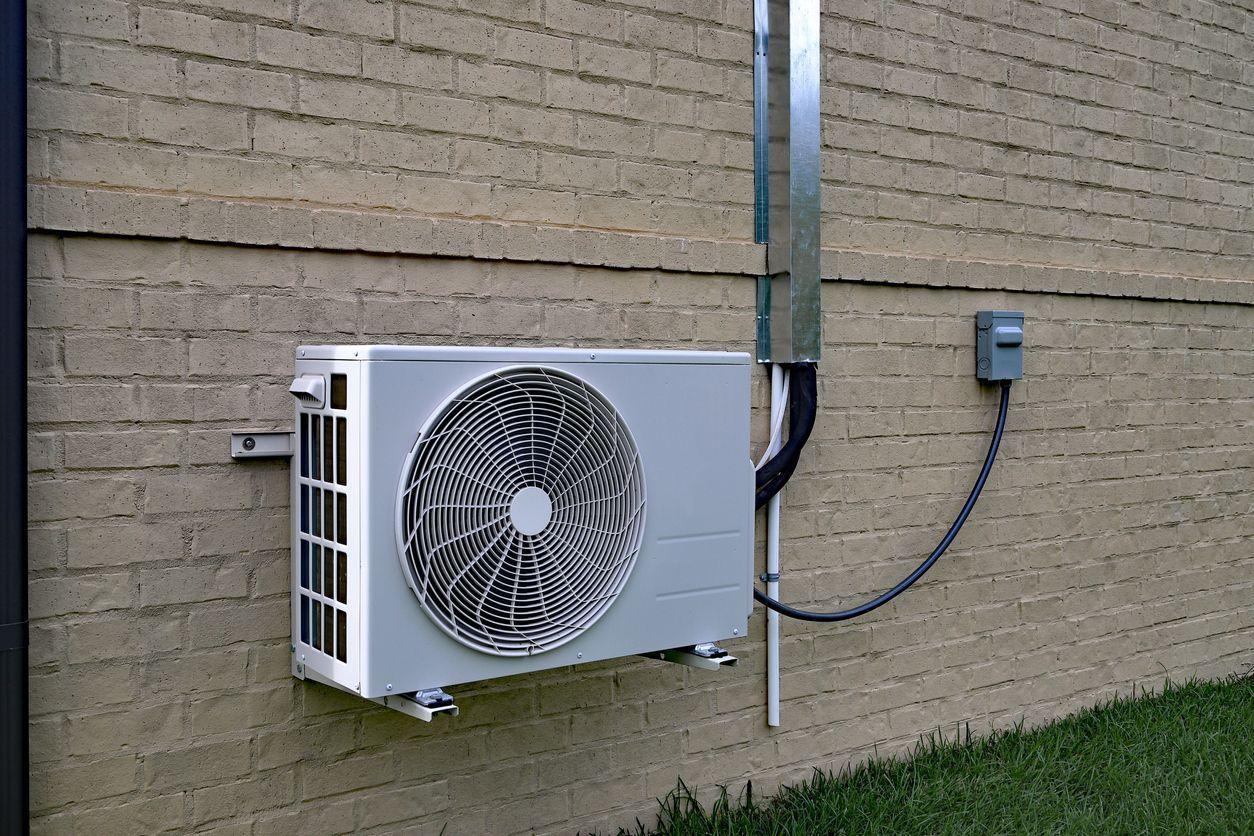Do Mini-Splits Heat and Cool Homes?

Although in use for more than half a century, ductless mini-splits have steadily gained popularity as a compelling alternative to conventional HVAC systems. However, many homeowners often associate ductless mini-splits with cooling-only systems, leaving homeowners to ask – do mini-splits heat and cool?
Do Ductless Mini-Split Systems Provide Heating and Cooling?
Depending on the model you buy, most modern ductless mini-splits offer heating and cooling functions. Although heating and cooling models are typically more expensive than cooling-only systems, the ability to provide year-round comfort makes the investment worthwhile for many homeowners, especially those who live in colder climates.
Cooling-only units are more common in warmer climates in the South and Southwest where temperatures are mild during the winter.
How Do Mini-Splits Heat and Cool?
Ductless mini-splits are a “zone-control” HVAC system similar to air-source heat pumps, minus ductwork. Instead, a ductless heating and cooling system consists of an outdoor condenser unit and one or more indoor air handling units installed on ceilings or walls that distribute conditioned air into living spaces. A conduit that contains the refrigerant tubing, power cable, suction tubing, and a condensate drain connects the indoor and outdoor units.
During the warmer months, ductless heating and cooling systems use refrigerant to extract heat from indoors and release it outside through the compressor. Through modern advancements in HVAC technology, the most efficient, low-ambient mini-split heat pumps operate in temperatures as low as zero degrees. Mid-level mini-splits function efficiently in temperatures as low as 20 degrees, while economy models are typically 100% efficient down to 30 degrees.
Depending on the type of ductless heating and cooling system you own and its efficiency rating, determined by its Heating Seasonal Performance Factor (HSPF), you may require a backup heating source such as an electric resistance heater or gas furnace on extremely cold days.
Ideal Applications for Ductless Mini-Splits
Ductless mini-splits are commonly used to heat or cool one room or area of a home. A standard ductless system with a 13,000 BTU capacity per hour can typically cool or heat a space of up to 500 square feet.
While ductless mini-splits can be installed throughout a home to create temperature zones, this is rare. The most common applications for ductless systems include:
- Bonus rooms over garages and sunrooms. These rooms are often difficult to keep comfortable. They're usually too hot and stuffy in the summer and drafty and cold in the winter. A ductless mini-split provides supplemental heating or cooling to provide these areas with the boost they need.
- Attics, basements, and garages. Garages, attics, and basements are not usually connected to central HVAC systems. If you want to convert one – or all – of these areas to livable or workable spaces, a ductless system may be the ideal solution.
- Home renovations. If you're adding a new addition to your home, you'll need a solution to keep it comfortable throughout the year. Connecting the addition to you existing HVAC system is a timely, invasive, and expensive project. You can simplify the remodeling process by installing a ductless mini-split.
- Guest houses. Ductless mini-splits can also keep guest houses comfortable year-round.
The Cost of Buying a Ductless Mini-Split for Heating and Cooling
The average cost for a single-zone ductless mini-split that provides heating and cooling capabilities is between $1,500 and $4,500, according to ThePricer.org. Some of the factors that affect the price include:
- Multi-zone systems. Adding additional zones can cost about $500 to $1,500 each.
- Advanced features. Some popular features include Wi-Fi connectivity, advanced air filtration options, and programmable timers.
- Capacity rating. BTUs measure a ductless mini-split's heating and cooling capacity. Higher-capacity units can heat and cool larger spaces, but they come at an additional expense. The price can increase by about 10-20% per additional 6,000 BTUs.
- Energy efficiency. Ductless systems are measured by their Seasonal Energy Efficiency Ratio (SEER) in cooling mode and their HSPF in the heating setting. The higher the ratings, the more efficient the ductless mini-split is. Although you'll pay more for a higher-efficient system, you'll recoup some of the costs with reduced energy bills.
Arthur Smith, an electrical engineer and HVAC expert with Urban Home Corner, said cooling-only ductless mini-splits cost about $500 to $2,000 on average.
“It's important to consider your specific needs and budget when choosing a mini-split system,” Smith said. “A cooling-only model may be a good choice if you live in a climate with mild temperatures and don't require heating. However, if you live in an area with extreme temperatures or want the versatility of both heating and cooling, a mini-split that provides both may be a better investment in the long run.”